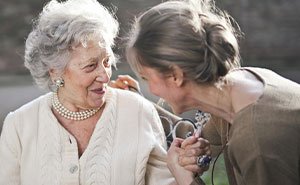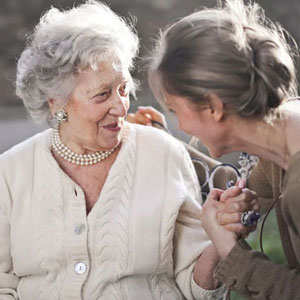Besides being probably the scariest thing one could fathom (this comes from a married person who remembers the whirlwind of emotions very vividly), a wedding is also one of the most magnificently beautiful ceremonies. A bride who makes her chosen one all teary-eyed about her appearance, the heartwarming promises said to each other, and the celebration to mark it all is truly a day like no other in a person’s life. Even if you choose to celebrate it with just a couple of your closest friends, it is still a day you’ll definitely remember forever. However, if you’re uncertain how your big day should look to truly make it exceptional, we might have some ideas here - take a look at our list of wedding traditions from all over the world!
A traditional wedding, in the sense that we understand it - all white and with traditional wedding vows - is just a tiny little part of the wedding day traditions. And, if you’re looking for alternatives to a traditional wedding but would still like to keep on the theme somewhat, these wedding ceremony ideas might just be the answer. From brides wearing special costumes or accessories to ward off evil spirits to the kidnapping of the bride and taking her on the horse ride of a lifetime (although we wouldn’t suggest you do that if you’re living, say, in NYC) and other special things to be done on the day, this list is one huge source of inspiration of making your wedding your own.
On the other hand, if you’re not one for borrowing things to create your own, treat this list like a showcase of all the unusual traditions tied to weddings. Good thing that we’ve also added explanations to each of the wedding day traditions, so you get an understanding of why people chose to do it at some point in time.
So, ready to check these wonderful wedding traditions out? If so, scroll on down below! Once you are there, be sure to vote for traditions that you found to be the most interesting, and share this article with your friends who might be planning their own ceremony.
This post may include affiliate links.
The phrase "Tying the knot"
Have you ever wondered where this commonly used phrase originated? Many cultures, including Celtic and Hindu weddings, join and tie the bride's and groom's hands together to symbolise the couple's commitment to each other and their new bond as a married couple. Handfasting is a Celtic ceremony ritual, whereas the hastmelap is a Hindu wedding ceremony ritual.
Handfasting is a pagan ceremony too, Celtic and pagan religions are very similar in beliefs
England: Something old something new something borrowed something blue
This wedding proverb is based on an Old English rhyme that lists the four good-luck items that a bride should have on her wedding day. "Something old" represents the couples' previous lives, while "something new" represents their bright future. "Something borrowed" usually refers to incorporating an item belonging to a happily married couple in the hopes that some of their good fortune will rub off on you. And the color blue is associated with fidelity and love, hence the "something blue."
'And a silver sixpence in your shoe' is the last line that so many people fail to remember.
Ireland: Keep one foot on the ground during first dance
When the bride and groom dance in Ireland, the bride must keep at least one foot on the floor at all times. According to Irish folklore, if she does not, evil fairies will come and sweep her away.
Lived in Ireland my entire life and never heard of this nevermind seen anyone do it
Germany: Polterabend
German couples traditionally clean up piles of porcelain dishes that their guests have thrown on the ground to ward off any evil spirits in their first bit of housekeeping together. The takeaway from this "Polterabend" is that when two people work together, they can face any challenge that comes their way.
Wales: Lovespoons
When a Welshman fell in love and was ready to commit, he carved wooden spoons called "lovespoons" and gave them to his beloved. Decorations included keys, representing the key to his heart, and beads, representing the number of children he desired.
Mexico: Wedding Lasso
During the ceremony, a "lazo," or lasso, made of rosary beads and flowers is draped around the shoulders of a Mexican couple in the shape of figure eight. Not only does "el lazo" represent the couple's union, but its shape also resembles the infinity symbol, indicating how long they hope their marriage will last.
Venezuela: Couple leaves before the end of the reception
Don't wait until the reception is over to approach a Venezuelan couple; they may have already left. It's good luck for the newlyweds to sneak away before the party ends without being discovered; it's also good luck for whoever finds out they're gone.
Denmark too - and we run after them while throwing rice at them - for good luck
Sweden: Stealing kisses
When the bride leaves the table in Sweden, all the ladies at the reception are free to steal a kiss from the groom. When the groom leaves the room, all surrounding gentlemen are free to kiss the bride.
China: Carrying the bride
In China, a bride's family will hire a "good luck" woman to look after her as she travels in an elaborately decorated sedan chair from her home to her groom's. Furthermore, attendants are busy parasailing the bride and tossing rice (a symbol of health and prosperity) at the chair.
India: Mehndi
It's common for Indian women to gather their closest girlfriends and sit for hours at a time to have their skin intricately painted, tattoo-style, with mehndi, a type of henna paint. The intricate and beautiful skin art lasts approximately two weeks.
It is now very popular... not sure it was a tradition earlier amongst all communities..
Peru: Cake pull
In Peruvian weddings, the cake is typically assembled with ribbons attached to charms, one of which is a fake wedding ring. During the reception, all the single women in attendance participate in the "cake pull." Each participant grabs a ribbon, and the single lady who pulls out the fake wedding ring, per tradition, will be the next to get married.
This is a nice one, much less hysterical than tossing the bouquet and have to see those ladies dive on it like sharks ;)
Scotland: Eloping
Marriage in England was once restricted to couples aged 21 and up. But that didn't stop two young lovers from finding a way around the rules—in this case, a nearby Scottish town with no such restrictions. Gretna Green is still a popular elopement destination for couples today.
I wouldn't say it's a popular place for eloping couples today, just a popular place for people who don't want an overwhelming wedding. I got married in Gretna Green the ceremony was lovely, sadly the place was over-run by tourists so it got a bit crazy with people running after the wedding car to take photos lol
Romania: Hiding the bride
Before the wedding, guests in Romania collaborate to "abduct" the bride, whisking her away to an undisclosed location and demanding a "ransom" from the groom. Typical inquiries? A few bottles of alcohol, or if you really want to make the groom sweat, sing a love song in front of the entire party.
Japan: A White Tsunokakushi
A Japanese bride attending a traditional Shinto ceremony wears white from head to toe, including makeup, kimono, and a hood known as a "tsunokakushi." The white represents her maiden status, and the hood conceals her "horns of jealousy" toward her mother-in-law.
Spain: Cutting the tie
At some Spanish weddings, the groom's friends will cut up his tie with scissors and sell the pieces to guests to raise money for the newlyweds. The same procedure is sometimes used on the bride's garter. Whatever it takes to make a few extra dollars!
China: Bow and arrow
We can only hope that the groom remembers to remove the arrowheads. In China, a prospective husband will shoot his bride several times with a bow and (headless) arrow, then collect and break the arrows during the ceremony to ensure their love will last forever.
Norway: Kransekake
Change things up from the traditional white wedding cake. A towering special-occasion cake known as a "kransekake" is traditionally served at Norwegian weddings. It's made with iced almond cake rings shaped into a cone, and a wine bottle is frequently placed in its hollow center.
Philippines: Releasing white doves
Happy brides and grooms in the Philippines release a pair of white doves—one male, one female—into the air after they tie the knot. The birds are said to represent the newlywed couple's harmonious life together.
China: Three dresses
Brides in China typically walk down the aisle in a slim-fitting, embroidered gown known as a traditional qipao or cheongsam. They usually change into a more elaborate gown with Western flair for the reception. The bridal fashion show, however, does not end there. Chinese brides frequently change into cocktail dresses at the end of the night. Triple the number of dresses, triple the fun!
In many British colonies, brides used to have a 'leaving dress' they changed in to near the end of the night. They would then farewell guests and leave on their honeymoon, while guest would stay for another hour or so.
Scotland: Covering the bride and groom
The day before their wedding, Scottish brides and grooms are captured by their friends and covered in everything from molasses and ash to flour and feathers before being paraded around town. The goal may appear to be ultimate humiliation, but the ritual is rooted in the practice of warding off evil spirits.
Wearing your ring on the "Ring finger."
This custom dates back to the Romans, who believed that the fourth finger on the left hand was linked directly to the heart by a vein known as "the vein of love." Because of this hand-heart connection, this finger has long been considered the best place to wear one's wedding ring.
We bought the most beautyfull engagement rings, that will also be our wedding rings... however, they are impossible to wear comfortably on any finger as there is a sharper edge to it... So we both wear it around our neck on a chain and for our weddingday we'll polish them, wear them for a few minutes on our finger "for the picture" and then it's around the neck again, closer to our heart ;)
Italy: La Serenata
An Italian groom may traditionally throw a surprise party outside his bride-to-window be's the night before the wedding. "La serenata" begins with the groom serenading his fiancée, accompanied by musicians. Then it becomes a full-fledged party, complete with a lavish buffet and all of the couple's friends and family.
Tossing rice at the newlyweds at the conclusion of the ceremony
Marriage used to be associated with growth, from starting a family to increasing one's assets. Tossing rice at newlyweds at the end of the wedding ceremony conveyed best wishes and good luck—for babies, bountiful harvests, and everything in between. Tossing things on the couple at weddings nowadays takes many forms, from dried lavender buds and blowing bubbles to biodegradable confetti.
French Polynesia: Newlyweds step on relatives
In the French Polynesian Marquesas Islands, after the wedding, the bride's relatives lie side by side, face down on the ground, while the bride and groom walk over them like a human rug.
oh dear.... I hope nothing gets broken and the couple walks without shoes on those poor souls..
India: Marrying a tree first
If you are a Hindu woman born during the astrological period when Mars and Saturn are both in the seventh house, you are cursed; if you marry, expect to be widowed young. Fortunately, there is a solution: first marry a tree, then have it cut down to break the evil spell.
Greece: Shaving the groom
Taking the term "groomsman" literally, a Greek groom's best man, or "koumparos," becomes his barber on his wedding day when he pulls out a razor and shaves his pal's face. However, there is a sweet side to the groom's day. His new mother-in-law will feed him honey and almonds after he has been freshly shaved.
Czech republic: Placing a baby on the couple's bed
Before a Czech bride and groom tie the knot, an infant is placed on the couple's bed to bless and enhance their fertility. Guests shower them with rice, peas, or lentils after they marry in order to promote fertility.
This must be a tradition starting a long, long time ago... Having many kids (enhance their fertility/promoting it) is usually a religios thing. The Czech republic is one of the most atheist countries in all of Europe.
Germany: Sawing a log
After getting married in Germany, couples are given a large log and a saw. It is believed that by sawing the log in half as a team, they are demonstrating their ability to work together to overcome difficult obstacles.
Norway: Brides wear crowns to deflect evil spirits
According to one Norwegian tradition, the bride will wear an ornate silver and gold crown with small charms dangling all around it. The tinkling sound she makes when she moves is supposed to deflect evil spirits.
Gotta love how these powerful and evil spirits from another realm of existence, who can completely wreck your life; can be thwarted by a soft and pleasant sound.
Congo: No smiling on the wedding day
While most newlyweds are giddy with excitement and anticipation, Congolese couples must keep their joy in check. The couple is not permitted to smile during their entire wedding day, from ceremony to reception. If they do, it indicates that they are not serious about marriage.
Really interesting. Glad to see for the most part people were respectful of other's traditions, even if they are outdated. There is one my grandad said they had when he was young, in country towns in Australia. After the couple had left on the wedding night and the guests had partied for another couple of hours, the guest snuck up to where the couple were staying and made a lot of noise, banging pots and pans etc. Not sure of the reason, but it might be similar to tying tin cans etc on the back of the car the couple drives off in.
Ethnic good, ethnic good, Europe good, Africa good, Asia good, ethnic good, brown good, black good, South America good, ethnic good, WHITE AMERICAN CHRISTIAN BAD BAD BAD
GunderCansfan, Why are all of your comments inflammatory? Is this what you do for fun? You should make a boredpanda post about the pathetic hobbies people have. I think you would have great insight into this.
Load More Replies...Really interesting. Glad to see for the most part people were respectful of other's traditions, even if they are outdated. There is one my grandad said they had when he was young, in country towns in Australia. After the couple had left on the wedding night and the guests had partied for another couple of hours, the guest snuck up to where the couple were staying and made a lot of noise, banging pots and pans etc. Not sure of the reason, but it might be similar to tying tin cans etc on the back of the car the couple drives off in.
Ethnic good, ethnic good, Europe good, Africa good, Asia good, ethnic good, brown good, black good, South America good, ethnic good, WHITE AMERICAN CHRISTIAN BAD BAD BAD
GunderCansfan, Why are all of your comments inflammatory? Is this what you do for fun? You should make a boredpanda post about the pathetic hobbies people have. I think you would have great insight into this.
Load More Replies...
 Dark Mode
Dark Mode 

 No fees, cancel anytime
No fees, cancel anytime 











































































